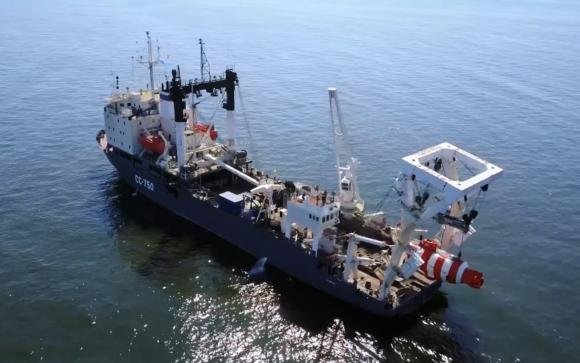The Russian special vessel SS-750 was near the Nord Stream pipes four days before the pipes were blown up on September 26 last year. The special vessel is designed to carry out operations under the sea and has a mini submarine of the AS-26 Priz type on board.
The Norwegian Defense Command confirms in a response to a document inspection that 26 photos of the Russian vessel were taken from a Danish patrol boat that was in the area east of Bornholm on 22 September 2022.
“It’s incredibly interesting. The SS-750 is a special vessel that is designed precisely for underwater operations,’ says the Swedish researcher, Russia expert and intelligence expert Joakim von Braun.
Jacob Kaarsbo, who is a senior analyst at the think tank Europe and previously worked for 15 years in the Defense Intelligence Service, believes that the information “sheds light on what was going on in the area in the days before”.
“The SS-750 is the most interesting vessel to confirm, because we know it has the capacity to carry out such an operation,” says Jacob Kaarsbo.
Information has previously revealed that the Norwegian Defense Command is in possession of 112 images of Russian vessels in the area. But this is the first time that the defense has confirmed that it is the specific Russian vessel SS-750 with the mini-submarine on board.
At the same time, the Norwegian Defense Command refuses to provide access to the photos of the Russian special vessel, as the photos are “of an intelligence nature” and “are part of the intelligence work”.
Several Russian naval vessels
The German media T-Online and the open source intelligence analyst Oliver Alexander have previously described that the special vessel SS-750 was one of a total of six Russian naval vessels that may have been in the area in the days leading up to the blasting of the pipelines. They based this, among other things, on information from anonymous sources and satellite images that showed that SS-750 had left the port in Kaliningrad at the same time as, among others, the vessels Aleksandr Frolov and SB-123.
These satellite photos, along with AIS data from a tugboat, indicate that SS-750 sailed from Kaliningrad at 00:22 on 21 September 2022. AIS transmitters are typically used by larger vessels to supplement radars. They send signals about the ship’s name, number, direction, draft and speed and can thus be used to map the movement of vessels.
The SS-750 sailed even without the AIS on. However, the tug Alexandr Frolov had its AIS on when departing from the Russian naval port. AIS data from this vessel shows that the convoy of naval vessels headed for Bornholm, but north of Poland the tug’s AIS was also switched off. Until now, it has been assumed that the SS-750 and the five other vessels continued to the area where the Nord Stream pipes were blown up a few days later. Now the Defense Command has confirmed that the SS-750 was observed in the area.
“This is clear confirmation. That vessel is part of Russia’s readiness for submarines and underwater operations. In theory, that vessel may well have been there for other reasons, but the timing to be in exactly that place at that time is special,’ says analyst Oliver Alexander.
Russian Navy file photo
Source: http://information.dk/

